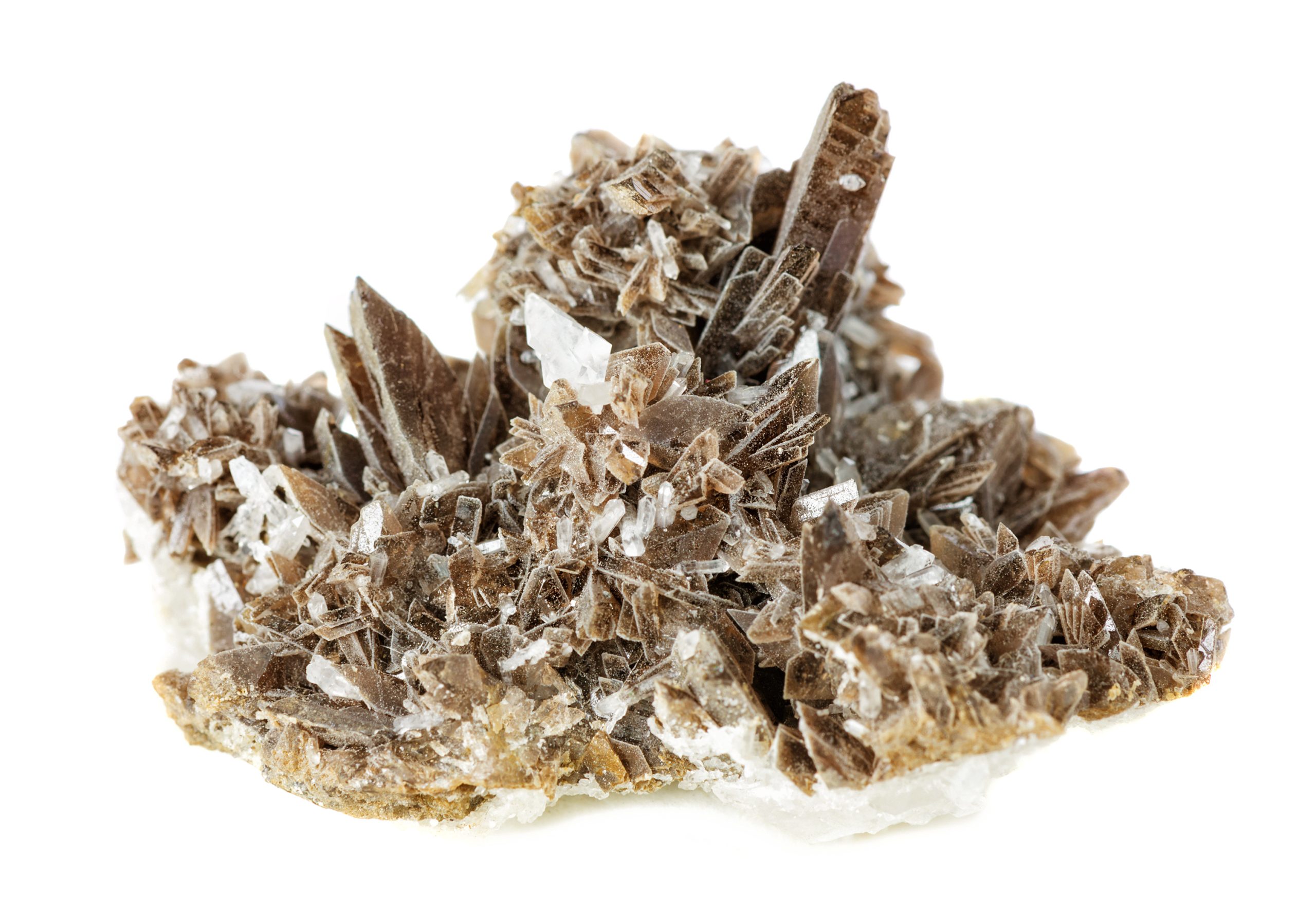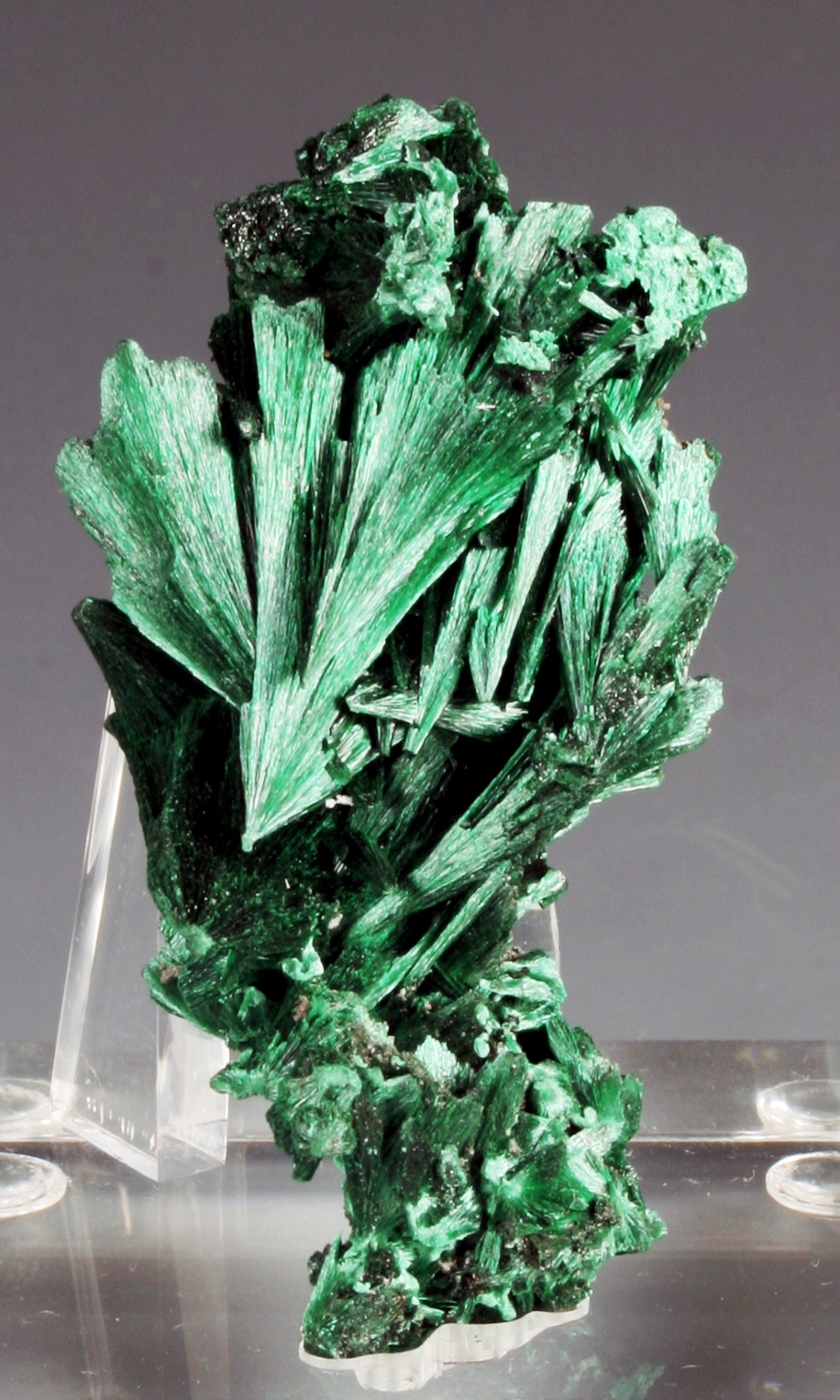Axinite is the name for a group of basic aluminum boro-silicate minerals of calcium, iron, magnesium, and manganese. Mineral Collectors value the sharp, transparent crystal forms. The International Mineralogical Association does not recognize Axinite as an individual mineral species without a Sub-Designation. Many mineral collectors still refer to it by its traditional name without further classifying the type of Axinite. Most known minerals are of the Axinite-(Fe) type. This mineral was named in 1787 after the Greek word axing, which means “ax,” in allusion to the sharp crystals of this mineral. The individual member types were originally Ferro-axinite, Magnesio-axinite, and Mangan-axinite. The IMA renamed these with a suffix designation for easier cataloging reference in 2008.
Members
The individual members of the group are: Axinite-(Fe), (Ferro-axinite) Ca2FeAl2BSi4O15(OH) is iron-rich with the colors of clove-brown, brown, plum-blue, or pearl-gray. Axinite-(Mg), (Magnesio-axinite) Ca2MgAl2BSi4O15(OH) is magnesium-rich, with colors of pale blue to pale violet or light brown to light pink. Axinite-(Mn), (Mangan-axinite) Ca2MnAl2BSi4O15(OH) is manganese rich with the colors of honey-yellow, clove-brown, and brown to blue. Tinzenite: (Ca,Mn)3Al2BSi4O15(OH) is a manganese intermediate with yellow to brownish yellow-green colors.
Properties of Axinite
This mineral is pyroelectric and piezoelectric. Pyroelectricity is a property of certain crystals which are naturally electrically polarized. Pyroelectricity can be described as the ability of certain materials to generate a temporary voltage when heated or cooled. Piezoelectricity is the electric charge accumulating in certain solid materials, such as crystals, in response to applied mechanical stress. The word piezoelectricity means electricity resulting from pressure and latent heat. The colors include smoky brown, dark brown, purplish-brown, greenish-brown, gray, and black. Less commonly, purple, blue, green, orange, or yellow. Very rarely, it is multicolored. Axinite is strongly dichroic in that the mineral displays one color when viewed from one angle but a different color when viewed from a different angle.

Axinite Gem
The axinite group belongs to the Triclinic Crystal System, Pinacoidal Crystal Class. The streak is colorless, and the hardness is 6.5 – 7. The luster is Vitreous, with a Specific Gravity of 3.3 – 3.4. Axinite (Mn) from Franklin, New Jersey, has a red fluorescence. Axinite forms in flattened tabular crystals with sharp edges and dense groups of such crystals. It is also grainy, bladed, columnar, in platy aggregates, in rosettes of sharp crystals, and massive. Crystals are often striated or have parallel line growths. The mineral is found in hornfels and other contact metamorphic rocks near granite intrusions and in granite pegmatites, alpine clefts, and altered diabase.
Noteworthy Localities:
Some of the finest Axinite-(Fe) crystals have come to Le Bourg de Oisans, France, as significant, well-formed, transparent crystals. Sharp, platy aggregates, often coated with chlorite, come from the Medel Valley, Grischun, Switzerland. A classic locality for Axinite is the St. Just District, Cornwall, England, especially at Stamps and Jowl Zawn at Botallack. Russia has produced exceptionally well-formed, large transparent crystals, often doubly terminated from Puiva, in Saranpaul. Also in Russia is the famed locality of Dal’negorsk, Primorskiy Kray, which has produced distinct, pointy aggregates of Axinite. In Japan, dark Axinite crystals came from the Obira mine, Ono-gun, Oita prefecture, Toroku mine, Takachiho, Miyazaki Prefecture.
The Shigar and Tormiq Valleys, Skardu District, Baltistan, Pakistan, have produced gemmy, alpine-type formations of this mineral. Nice brown crystals of Axinite have been found in Tasmania, Australia, at Colebrook Hill. In the United States, the premier Axinite locality is the New Melones Dam Spillway, near Copperopolis, Calaveras County, California, where sharp brown crystals were found in a one-time construction find. In Canada, gemmy crystals come from the Grey Cloud Claim, Hart River, Yukon Territory, Canada.
Axinite-(Mn) is well known at Franklin, Sussex Co., New Jersey, where it forms in honey-yellow to orange crystals that are strongly fluorescent. Other Axinite-(Mn) localities include Stig, Oslo, Norway; Dal’negorsk, Primorskiy Kray, Russia; Pachapaqui, Ancash Department, Peru; and the Iron Cap Mine, Aravaipa, Graham County, Arizona.
Axinite-(Mg) has recently been found in phenomenal gemmy crystals, often purple but sometimes orange or bi-colored, at the Merelani Hills, Arusha, Tanzania. Axinite-(Mg) comes from Luning, Mineral County, Nevada.
Tinzenite forms surprisingly aesthetic specimens despite it being a rare mineral. Sharp rosettes come from the Molinello Mine, Graveglia Valley, Liguria, Italy, and exceptionally colored examples were found in a very limited occurrence at the Wessels Mine, Hotazel, Kalahari Manganese Fields, South Africa. For more information about this mineral, visit mindat.org or join our Facebook group to network with others of like minds. You can also visit us on Instagram and/or attend our Gem and Mineral shows.
By Bill Jones, Sidewinder Minerals













